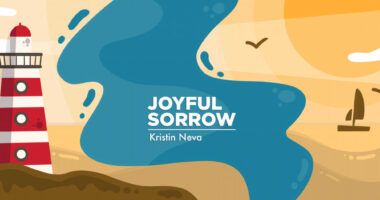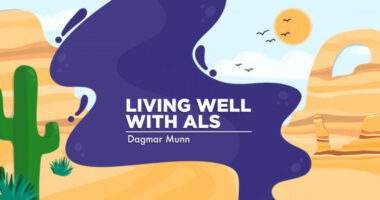All of These People Found Life After ALS

“You can either celebrate what you can do, or mourn what you can’t. Every day I wake up and create a new normal. I don’t dwell on what has changed, but instead, I focus on keeping busy achieving my goals.” –Augie Nieto II, fitness pioneer
Nieto and I, independently, arrived at a very similar conclusion. However fractionally small, there are still goals to pursue post-diagnosis, talents to apply, and achievements to celebrate.
Nieto became chairman of the board of the ALS Therapy Development Institute, the world’s first and largest nonprofit biotech focused solely on ALS research. He is further noted for creating “Augie’s Quest,” which has raised over $45 million in funds for research into the disease. All of this occurred after his diagnosis of ALS.
Similarly:
Stephen Hillenburg, creator of the animated TV series “SpongeBob SquarePants,” is committed to working on the show “for as long as [he is] able.”
O.J. Brigance continues to serve as senior adviser for player engagement for the Baltimore Ravens. For his ALS activism, Brigance was one of two recipients of the 2016 NCAA Inspiration Award.
Steve Gleason founded the Gleason Initiative Foundation with the mission of providing folks with neuromuscular diseases or injuries the latest technology and equipment. He also inspired the Steve Gleason Act, which permanently provides funding for communications devices that help patients with degenerative diseases.
Pete Frates inspired the “Ice Bucket Challenge.”
Of course, Stephen Hawking may be the profound societal contributor from diagnosis until death.
Following is a sampling of other ALS patients’ impact prior to their passing:
Zeca Afonso, a musician, resumed teaching after a 15-year hiatus, performed three concerts, and released three albums.
Economist and politician Luca Coscioni went back to political life and denounced the lack of public funding for embryonic stem cell research in Italy.
Tony Judt, historian, essayist, and university professor, wrote “Ill Fares The Land,” challenging readers to debate “what comes next?”
Jenifer Estess, a theatrical producer, wrote her memoir, “Tales from the Bed: On Living, Dying and Having It All.”
Catherine Gody Wolf, a psychologist and expert in human-computer interaction, published research into the fine-scale abilities of advanced ALS patients.
Entrepreneur Chris Rosati grabbed headlines with the “Krispy Kreme Heist,” in which he “hijacked” a delivery truck and then dispensed doughnuts from the “stolen” vehicle. After the doughnut caper, Rosati began handing out “Butterfly Grants,” giving school kids $50 each and telling them to start changing the world.
Pastor Ed Dobson authored a terminal illness devotional and spent 12 months emulating Christ while writing “The Year of Living Like Jesus.”
Jazz bassist and composer Charles Mingus continued composing and supervised a number of recordings.
Philosopher Franz Rosenzweig continued writing with the help of his wife, who would recite letters of the alphabet until he indicated the correct one. This continued until she could guess the word or phrase he intended.
These people obviously did not retreat into themselves. Nor do the many people with ALS who find rewarding, perhaps unpublicized, endeavors to assuage personal tragedy. The key is to find a passion and figure out how to pursue it. Within the ALS community, myriad examples exist of individuals doing exactly that.
My long-held, though oft-dormant, passion is writing. The fact that it may be pursued deep into ALS’s tortuous path is fortuitous. Two close friends of mine, before succumbing to ALS, suggested that I find a platform to share my thoughts, experiences, and perspective in dealing with ALS. For over two years, we were often in daily contact. We formed an effective, ad hoc, three-person support group that brought each of us great comfort as we listened and related to what each other was going through.
After they died (within six months of each other), their primary caregivers shared with me how much my friends benefitted from our dialogue. It is, partially, with them in mind that I now scratch my writing itch.
Paradoxically, ALS has narrowed my life significantly and deepened it immensely. This black hole-like effect is confoundingly wicked, yet tantalizing rich. My noteworthy daily highlights are, admittedly, microscopic on the normally functioning human scale. However, whereas I once was prone to lamenting the most trivial ache or pain, I now celebrate the fractional residual function that I have left.
Joni Mitchell may have been correct that “you don’t know what you’ve got till it’s gone,” in the context of paradise and parking lots. But these days, I find that the things I treasure most are those that are threatened to be stolen, like my next breath; for each respiration is a gift and signifies there is more to be done.
***
Note: ALS News Today is strictly a news and information website about the disease. It does not provide medical advice, diagnosis, or treatment. This content is not intended to be a substitute for professional medical advice, diagnosis, or treatment. Always seek the advice of your physician or other qualified health provider with any questions you may have regarding a medical condition. Never disregard professional medical advice or delay in seeking it because of something you have read on this website. The opinions expressed in this column are not those of ALS News Today or its parent company, Bionews Services, and are intended to spark discussion about issues pertaining to ALS.







Leave a comment
Fill in the required fields to post. Your email address will not be published.